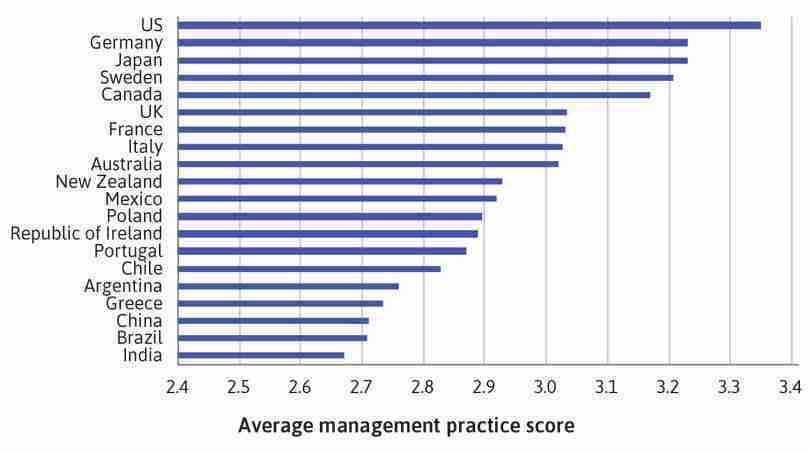Empirical Project 6 Measuring management practices
Learning objectives
In this project you will:
- explain how survey data is collected, and describe measures that can increase the reliability and validity of survey data (Part 6.1)
- use column charts and box and whisker plots to compare distributions (Part 6.1)
- calculate conditional means for one or more conditions, and compare them on a bar chart (Parts 6.1, 6.2, and 6.3)
- construct confidence intervals and use them to assess differences between groups (Parts 6.2 and 6.3)
- evaluate the usefulness and limitations of survey data for determining causality (Part 6.3).
Key concepts
- Concepts needed for this project: mean, conditional mean, median, percentile, maximum, minimum, causation, and natural log transformation.
- Concepts introduced in this project: box and whisker plots, and confidence intervals.
Introduction
Core Economics website projects
This empirical project is related to material in:
Firms play an important part in most modern economies, by coordinating production to produce goods and services. Within firms, there is usually a top-down decision-making structure in which owners decide on long-term strategies, and managers direct the activities of their employees to implement these strategies. Read more about how decisions are made in firms, and the relationships between owners, managers, and employees in Sections 6.2, 6.3 and 6.4 of Economy, Society, and Public Policy.
We might expect firms where employees and production processes are better managed to be more productive than poorly managed firms. To make these comparisons between firms, we first need to define what ‘good’ management is, and then find a way to quantify it—neither of which are straightforward tasks. Researchers Bloom, Genakos, Sadun, and Van Reenen (2012) took on this challenge, devising a way to accurately evaluate and score management practices across industries and countries. They then surveyed numerous organizations in various industries and countries to collect information about the quality of managerial practices within each firm. Using these survey responses, they constructed a measure of how well a firm was managed, ranging from 1 (‘worst’ management practice) to 5 (‘best’ management practice). This measure allowed them to compare management practices across industries and countries—something which would be difficult to do with other data collection methods (such as experiments). An example, for firms in manufacturing industry, is shown in Figure 6.1 below.
We will be using the data that Bloom et al. collected to make comparisons between countries, industries, and types of firms, and consider possible explanations for the patterns we observe.


